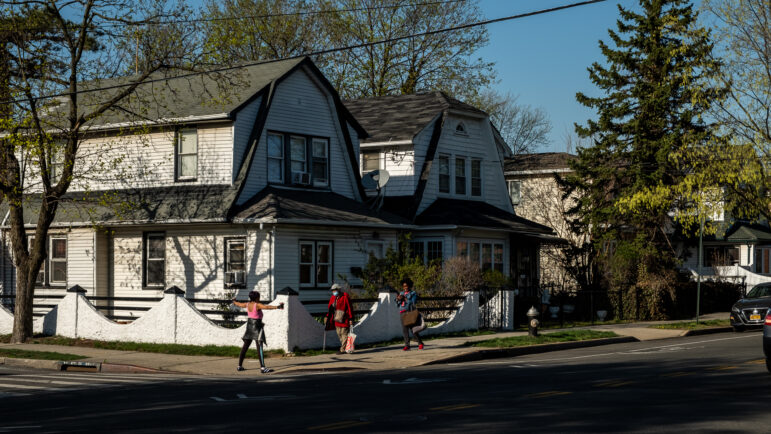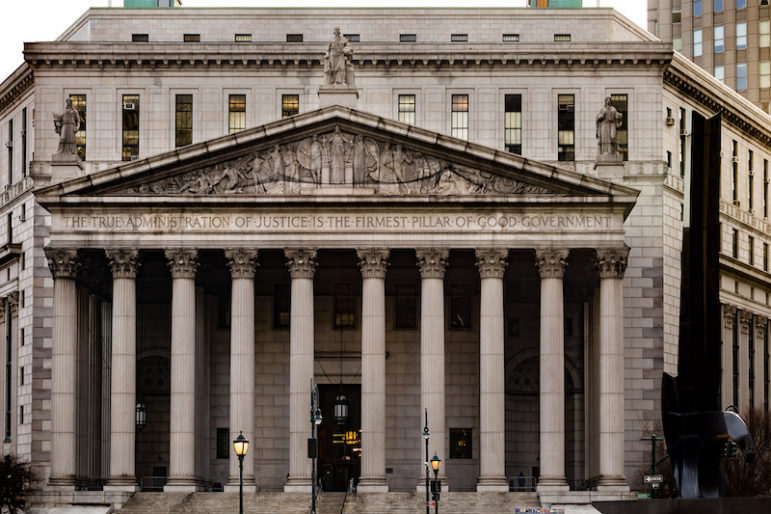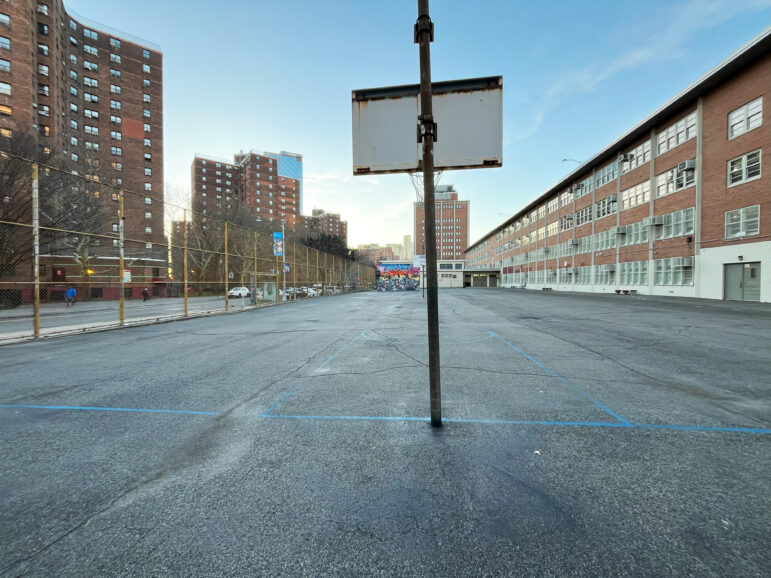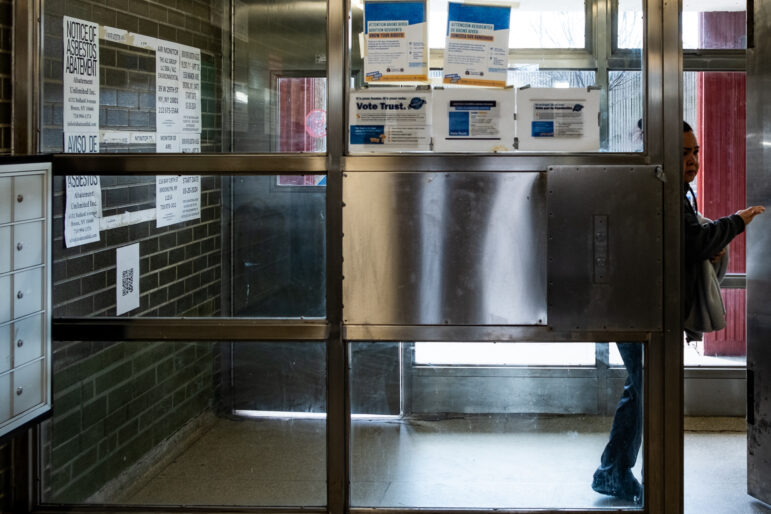
Department of City Planning
Part of a larger visualization by the Department of City Planning depicting working group recommendations on the topic of sustainability and resiliency
On Wednesday, as part of its ongoing study of Gowanus, the Department of City Planning announced the publication of a list of working group recommendations. This comes ahead of a public meeting focused on Gowanus schools, community resources and transportation that will be held on Thursday evening as part of the study.
Gowanus is one of ten areas where a neighborhood rezoning is being explored, is undergoing public review or has been approved as part of the mayor’s affordable housing plan. The Gowanus effort builds upon the Bridging Gowanus neighborhood planning initiative spearheaded by local councilmember Brad Lander from 2013 to 2015.
In the spring, stakeholders in Gowanus participated in five different working groups, each focused on a different topic: housing, arts and culture, the public realm, sustainability and resiliency, and industry and economic development. The Department of City Planning (DCP) has consolidated the ideas expressed at a total of 25 working group meetings into a list of recommendations.
One of the documents indicates recommendations from working group members that the city supports (in green) as well as recommendations that are possible but require more research (in yellow). In a move toward greater government transparency not seen in other rezoning areas, the city has also published a list of recommendations it doesn’t agree with and the reasons why. DCP has also created visualizations for each of the recommendations by category, which can be viewed here. It’s worth noting that these documents reflect DCP’s conception of what was expressed— working groups didn’t take any official vote on their recommendations. Here are the two lists, and see below for our analysis.
The first document shows consensus in the neighborhood about the need for certain neighborhood initiatives and projects, though on some initiatives the language is still rather vague.
On industry and economic development, recommendations include, “evaluate and explore other potential infrastructure improvements, like broadband, sewer, sanitation and resiliency improvements” and develop zoning tools “including but not limited to, restricting residential from certain blocks…”
DCP officials have already said the agency will not be rezoning any part of the Industrial Business Zone (IBZ) in the area, which extends to Third Street, but just how much of the area north of Third Street will be subject to a residential rezoning is still a major question.
On housing, recommendations include “promote the development of new affordable housing by applying Mandatory Inclusionary Housing (MIH),” (the city’s new policy that requires a percentage of affordable housing on all upzoned sites) and ensuring that on publicly owned land, the creation of affordable housing “exceeds minimum MIH requirements.” Some housing recommendations in yellow (they’re possible, but more research is needed) include the creation of a certificate of no harassment program to require landlords seeking to redevelop their buildings to prove they haven’t harassed tenants, the consideration of zoning changes that support medium and high-density buildings on major corridors and lower-density residential buildings on smaller corridors, and “mapping different MIH options” to allow different income levels to benefit from the affordable housing.
Over the past year, community members have repeatedly expressed an interest in creating new rules that mandate industrial or art space in residential buildings—such as by mandating that developers provide a percent of Floor Area Ratio for manufacturing spaces. The recommendation list includes a nonspecific reference to this, calling for the exploration of zoning tools including “requiring or incentivizing non-residential uses on appropriate large sites.”
There are also a series of recommendations relating to other goals, such as supporting the area’s arts and culture sector (including reopening the Gowanus Canal Community Center), improving the area’s storm resiliency, and ensuring public access to the canal.
As for recommendations that the city believes are infeasible? These include things like exploring a land-use strategy that makes artist live/work space available neighborhood-wide, establishing a right-of-return preference for displaced residents, and creating a Good Neighbor Tax Credit Program (to provide incentivizes to small landlords to keep rents unaffordable)—in all three cases, the city said there would be difficulty creating such policies.
The administration is also not willing to “consider mechanisms, such as leveraging new market rate residential development or through the … study to fund state of good repair in NYCHA developments.” It argues that NYCHA is addressing its huge capital repair needs gap in other ways.
As for the idea, proposed by industrial advocates, of increasing the allowable industrial density within the IBZ in order to create more space for industrial businesses, the administration says “studying [that] area for land use changes would significantly expand the study’s scope.”
“Of course we don’t agree on everything — this is Brooklyn, after all — but we were able to have honest, thoughtful, adult conversations about those differences,” said Lander in a press release on Wednesday. “I give real credit to City Planning for spending the time to convene and listen to these groups, and to communicate transparently about the recommendations that they don’t support—or at least, not yet. We will keep pushing as hard as we can for deeper investments in public housing, to better support manufacturing businesses to grow and create good jobs, and to make sure artists, artisans, and small businesses have a real place in the future of Gowanus.”
Several other voices in Lander’s press release also praised the planning process, while continuing to urge the city for more commitments.
“Local residents and businesses are hopeful that as the Gowanus PLACES study moves forward that the de Blasio administration will seize the opportunity to meaningfully address the community’s desire to grow inclusively and equitably by preserving and growing three our community’s greatest assets – our public housing, our industrial businesses and our local artists – and to do so while creating truly affordable housing and the City’s first Eco-District…” said Michelle de la Uz, executive director of the Fifth Avenue Committee.
This isn’t the first time DCP has issued a list of working group recommendations. It shared a draft form in July with working group participants, but the agency’s approach back then faced criticism by some working group members who felt important feedback was missing. The new version doesn’t differ much from that earlier exchange, but it does include one idea that had been totally omitted from the July edition: that of prohibiting development altogether in the Gowanus flood zone. DCP included the idea this time—and rejected it.
Going forward, we’ll see how the larger neighborhood reacts to these recommendations at tomorrow’s public meeting, and whether stakeholders continue to press for some of the ones the city has deemed unfeasible. DCP plans to use the recommendations to come up with a more detailed planning framework in early 2018.









